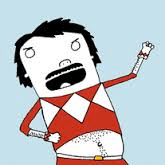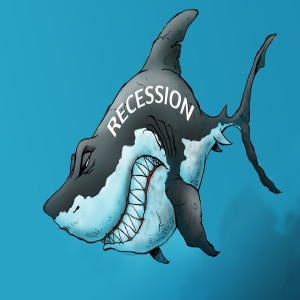Rick Steves’ Europe: Croatia’s colorful coast
I love the knack Croatians have for taking a humble stretch of craggy shoreline and turning it into a wildly romantic bar or café. In the coastal town of Rovinj, several bars and restaurants offer tables atop the town's rocky seawall, and some provide you with a pillow – an invitation to find your own nook in the rocks overlooking the bay. As the sunset fades and the flames from tealight candles seem to brighten, you realize just how easy it is to enjoy a luxurious moment on the Adriatic coast.
Boasting thousands of miles of seafront and more than a thousand islands, Croatia’s coastline, with its pebbly beaches, predictably balmy summer weather, and melt-in-your-mouth seafood, is Central Europe’s Riviera. In fact, it’s sometimes difficult to distinguish this place from Italy – they're both so dreamy and popular.
The most Italianesque stretch is on the northern peninsula of Istria. Instead of the sheer limestone cliffs found along the rest of the Croatian shoreline, the Istrian coast has gentle green slopes, giving it a more serene feel. Though Istria has its share of tacky touristy beach towns, it also hosts my favorite Adriatic town, Rovinj.
Surrounded by the sea on three sides, Rovinj is like a little hunk of Venice draped over a hill. It’s simply romantic. Boats laden with kitschy shells for sale rock giddily in the harbor. The fountain on the main square celebrates the arrival of the water system – in 1959. A bell tower with a rickety staircase requires an enduring faith in the strength of wood. From the top a patron-saint weathervane boldly faces each menacing cloud front that blows in from the sea.
Walking through the market, I peruse the fresh offerings: figs, cherries, grapes, olive oils, honey, and more. Women push grappa and homemade fruit brandies on me. Their sample walnuts are curiously flavorful. The fish market at the back is where locals gather ingredients for their favorite dish, brodet – a stew of various kinds of seafood mixed with olive oil and wine.
Istria's more famous southern rival, the Dalmatian coast, is home to Croatia’s top tourist town, Dubrovnik. Jutting confidently into the sea, Dubrovnik is ringed by thick medieval walls containing a traffic-free Old Town and a jumble of quiet, cobbled back lanes.
Though sun worshippers can easily find a pebbly patch along one of Dubrovnik’s beaches, to truly appreciate the coast, it’s best to head out to one of the islands. My two favorites are Korčula, with its "mini-Dubrovnik" vibe, and Hvar, a once-tidy fishing village with a hip, upscale-ritzy “Croatian Riviera” buzz.
The island of Hvar is known for its gentle climate, fragrant fields of lavender, and excellent wines. It’s also a big draw for celebrities and yachters, making it one of the most expensive places to stay in Croatia.
Activities in the main town, also named Hvar, are low energy. The main square is a relaxing people zone surrounded by inviting cafés filled with deliriously sun-baked tourists. The formidable fortress hovering above town rewards hikers with stunning views. At the Benedictine Convent, sisters make lace using fibers from the cactus-like agave plant. Some yellowed samples of their work date from the late 19th century.
For a humbler and less-expensive experience, try Korčula. While its backwater charm is now mostly trampled by tourists, it’s still a joy to visit. Korčula has two parts: the functional side – where most people park, eat, and sleep – and the time-warp Old Town.
Like some other Croatian coastal towns, Korčula was founded by the ancient Greeks. It became part of the Roman Empire and was eventually a key southern outpost of the Venetian Republic. The historic gate is a reminder that Korčula was once a mighty little place. Facades recall its 14th-century trading heyday, each one contributing to the evocative medieval townscape and dripping with drying laundry and local character.
Every Thursday in summer, lazy Korčula snaps to life when locals perform a medieval folk dance called the Moreška. Staged at an outdoor theater, the Moreška helps Korčulans remember their hard-fought past: A bad king takes the good king’s bride, the dancing forces of good and evil battle, and a happy ending follows.
When visiting the Dalmatian coast, seafood is a must, as hardworking restaurants seem to abide by the local creed: Eating meat is food; eating fish, that's pleasure. One waiter reminds me that a fish should swim three times: first in the sea, then in olive oil, and finally in wine. Red wines, which Croatians actually call “black wine” ( crno vino ), are a specialty along the southern coast.
With succulent seafood, sunny beaches, and a carefree attitude, Croatia’s coast offers Central Europe’s own twist on la dolce vita.
========
(Rick Steves (www.ricksteves.com) writes European guidebooks, hosts travel shows on public TV and radio, and organizes European tours. This column revisits some of Rick's favorite places over the past two decades. You can email Rick at rick@ricksteves.com and follow his blog on Facebook.)
©2024 Rick Steves. Distributed by Tribune Content Agency, LLC.
(c)2024 RICK STEVES DISTRIBUTED BY TRIBUNE MEDIA SERVICES, INC.














Comments